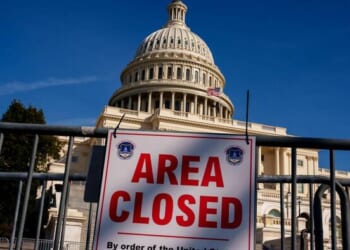Recently, President Trump, apparently in jest, threatened to fire Treasury Secretary Scott Bessent if he didn’t get lower interest rates. Although the context of the President’s remarks was his ongoing battle with the Federal Reserve to cut short-term interest rates, it is indeed reasonable to view yields on longer-term Treasury bonds as a good indicator of the success of the Administration’s overall economic policy. The lower the yield, the better. The long-term Treasury yield directly influences mortgage rates and therefore housing affordability. It also affects the cost of borrowing for new plant and equipment investment, which leads to higher current economic activity and future productivity gains. The long-term yield largely determines the cost of financing the federal government’s deficit and debt, whose unprecedented levels are causing concern owing to the risk of future high inflation, dollar collapse, and financial crisis. What has the Trump Administration’s record been so far on this key indicator?
To answer this question, I look at four different yields over the last 16 months. I consider the yields on the 10-year and 30-year Treasury bonds and the yields on the 10-year and 30-year Treasury Inflation Protected Securities (TIPS). The market for the 10-year Treasury bond is the most liquid in the world, and therefore its yield is low compared to other like-dated nominal securities and it is somewhat influenced by Federal Reserve monetary policy’s direct impact on short-term rates. For this reason, the 30-year Treasury bond may be a better measure of the bond market’s views on the long-range economic and fiscal implications of the Administration’s policies. The yields on TIPS net out the effect of current and expected future inflation rates, which are also somewhat influenced by monetary policies, and therefore reflect a purer sense than nominal yields of the real cost of financing government and other economic activity.
Other economic, non-policy factors like population and productivity growth, new technologies, international competition, geopolitical events, business cycles, financial conditions, and so on also play roles in the market determination of yields. The analysis here, however, is over relatively short periods, where those factors are less likely to change significantly. To evaluate the impact of the Trump Administration’s economic policies (tariffs, immigration, DOGE, tax cuts, budget spending, regulations, administrative actions, and so on), I compare yields in three periods. One period is from the time Kamala Harris became the Democratic nominee while Joe Biden was still President to Election Day, when the market would have been uncertain about which Administration would be put in place and how it would interact with Congress. The second period runs from the election to the present, which includes a mix of expectations and realizations for Trump policies along with the remaining effect of Biden policies. The third period begins after the inauguration and should provide an indicator of expected and actual Trump policies and Congressional actions. See Charts 1 and 2 for the 10-year and 30-year yields, respectively.


As we see, all yields increased following President Trump’s election and remained higher, on average, following his inauguration. This is particularly clear for the 30-year yields, which appear to be largely unaffected by the recent Fed rate cuts influencing the 10-year yields. Comparing pre- and post-election experience, the average daily 10-year nominal yield increased from 3.92 percent to 4.29 percent, and the 10-year real yield increased from 1.74 percent to 1.96 percent. The increases in the 30-year yields were larger and started from higher levels. The average 30-year nominal yield increased from 4.21 percent to 4.77 percent, perhaps reflecting concerns about higher future inflation (also reflected in the rising price of gold), and the 30-year real yield increased from 2.03 percent to 2.5 percent. The higher the yields, the worse the result for Trump policies.
What can explain the increase? Despite early rhetoric that DOGE would dramatically cut deficits, reality differed. The tax cuts were only partially funded by Medicaid and other spending cuts. The cost of health care, financed in large part by the government, continues to rise, and there has been no substantive policy attention to the sector’s fundamental inefficiencies and poor incentives. Tariff policy, although producing revenue, is erratic and of questionable legality. Congress recklessly increased spending on Social Security benefits for some government workers and retirees, and the Administration just passed up on the long overdue opportunity to modernize and simplify the eligibility standards for disability benefits. Fewer immigrant workers mean higher wages in certain sectors like farming and construction, and therefore higher prices. The Administration has not issued a long-range budget plan and it is reported that it will support an extension of higher Obamacare subsidies.
It is only one year into the new Administration; there is still time for the Trump Administration and Congress to change course and become serious about deficit reduction and substantive policymaking.
The post Interest Rates and the Trump Administration appeared first on American Enterprise Institute – AEI.













